Apple's 2010 MacBook Air (11 & 13 inch) Thoroughly Reviewed
by Anand Lal Shimpi on October 26, 2010 10:08 PM EST- Posted in
- Mac
- Apple
- MacBook Air
- Laptops
The 11
While both models are extremely light, the 11-inch MacBook Air is portable perfection. It’s the closest thing to an iPad with a keyboard (short of an iPad with an actual keyboard). I’m afraid that’s where the comparison ends. Despite what Apple would have you feel, the new MacBook Air is no more an iPad than its predecessor. The size and form factor is really nice however.
Apple won’t call it a netbook, but that’s exactly what the 11.6 inch MacBook Air is: a netbook with much better hardware. You get a full sized keyboard, an old but faster-than-Atom processor and a great screen. If you’re a writer, the 11-inch MacBook Air is the perfect tool just at an imperfect price.
While $999 is much more affordable than the previous generation MacBook Air, it’s at least $400 more than you would expect to pay for a notebook with these hardware specs. We’re talking about 2GB of memory, a 1.4GHz Core 2 Duo CPU with 3MB L2 cache and an NVIDIA GeForce 320M integrated graphics chipset.
Using the 11-inch MacBook Air is great. Closed it’s small enough to painlessly carry around and open it’s functional enough to get real work done on. The keyboard is mostly unchanged from the rest of Apple’s lineup.
You do make three sacrifices with the 11-inch’s keyboard: thinner function keys across the top, a not-as-tall trackpad and not as much wrist-rest area. Overall they are worthy tradeoffs as none of them impact typing speed. Despite the smaller than normal trackpad, it’s still much larger than what you get on most similarly sized notebooks from other vendors.
Build quality is of course excellent. The MacBook Air employs Apple’s unibody construction. There’s a removable plate at the bottom of the machine that covers the internals, but the typing/mousing surface is carved out of a single piece of aluminum and is solid.
The weakest link in the design is the hinge, which I feel is actually a bit looser than the hinges in other Apple notebooks. While the display is far from floppy, the hinge isn’t strong enough to keep the display from opening/closing more when faced with sudden movements of the notebook. Picking it up from a desk without closing the lid would sometimes cause the lid to tilt back . I didn’t have the problem of the lid auto closing due to gravity when I used the 11-inch Air while laying down, but I wouldn’t be too surprised if that developed over time. In the quest for weight savings sacrifices have to be made. While the rest of the construction is flawless, the hinge isn’t.
The screen is an odd (for Apple) 16:9 ratio 1366 x 768 panel glossy, LED backlit panel. You don’t get the glass bezel from the standard MacBook Pro and as a result the display doesn’t seem quite as glossy. Reflections indoors were minimal at worst, but it’s not a matte screen.


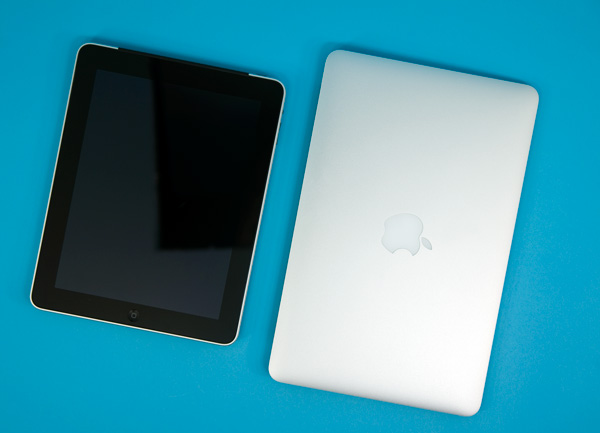


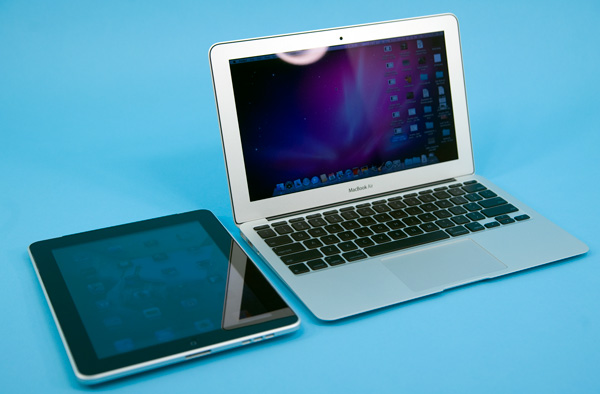
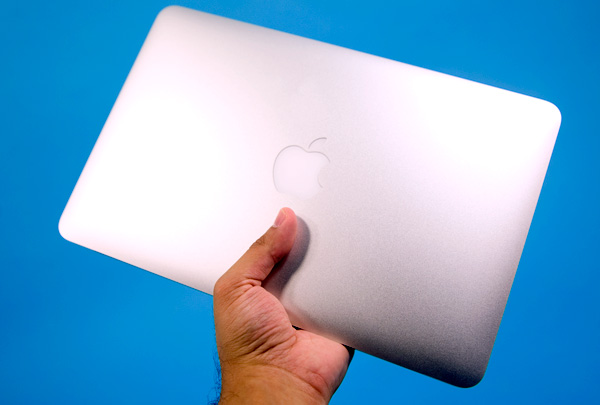

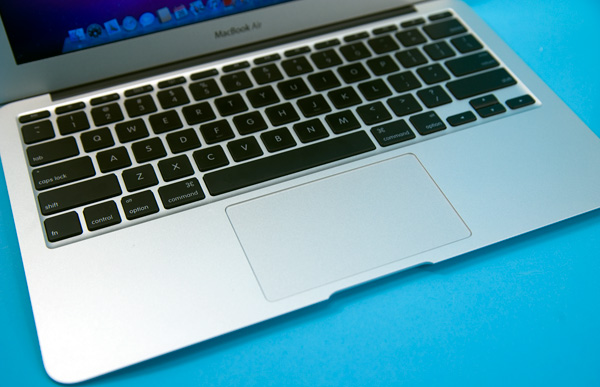
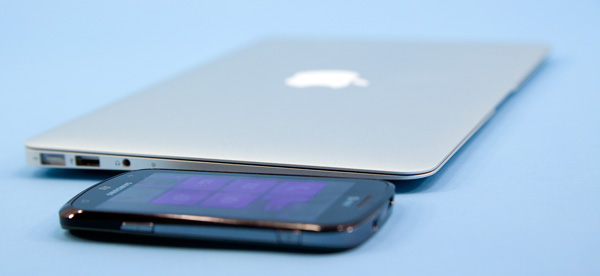








185 Comments
View All Comments
nvidia2008 - Wednesday, October 27, 2010 - link
Great article, just one niggle, Instant On does not refer to Boot, nor Wake From Sleep.From the Apple website:
"And when you put MacBook Air to sleep for more than an hour, it enters what’s called standby mode. So you can come back to MacBook Air a day, a week - even up to an entire month later - and it wakes in an instant."
http://www.apple.com/macbookair/design.html
Instant On refers to a Standby Mode (basically hibernate) that is not Boot nor Wake From Sleep.
AMDJunkie - Wednesday, October 27, 2010 - link
This is a good point; Macs with hard drives have "deep sleep" standby, which is the typical, "Hey, your battery is about to die so we're taking the system state from RAM to the hard drive" hibernation. This is an SSD, though, so I presume it writes it to the SSD after an hour, instead of after your battery dips under 5%, to help you save battery.nvidia2008 - Wednesday, October 27, 2010 - link
Yeah, I think Deep Sleep is the most closely related thing to Instant On, not Boot or Wake From Sleep. Cheershechacker1 - Wednesday, October 27, 2010 - link
OS-X, when put to sleep by closing the lid, will write out the necessary parts of memory to the hard drive.Then if your battery dies, the hibernate state resumes when you plug it back in.
If you have a ton of applications open and are using a lot of ram before closing the lid, it does take noticeably longer to actually begin sleep and turn off the HD, as indicated by the light on the macbook.
tipoo - Wednesday, October 27, 2010 - link
Yeah, Instant On is really just fast-wake-from-hibernate.Tuntavern - Wednesday, October 27, 2010 - link
Now there ARE two.ginny - Wednesday, October 27, 2010 - link
HiYou had said that your macbook air was using about 1.4 gb of memory when diting a handful of imgs in Photoshop. Do you think then that it isnt the best machine to get if I anticipate in using Adobe CS frequently? Do you think i should opt for a MBP instead? Or will upgrading the CPU and Memory suffice?
Thanks!
zhill - Wednesday, October 27, 2010 - link
Good review. I was waiting for you guys to review the new airs, good data. FYI, your images comparing the 13" MBA's size appear to be labeled incorrectly. I think the image (http://images.anandtech.com/reviews/mac/macbookair... is comparing the MBA 13" to the MBP 15" rather than the MBP 13".I'm also surprised that the screens had such a limited color gamut, I expected something in the 70% range rather than 40% but I suppose they trade that for energy efficiency(?).
I would be very curious to see your benchmarks include a new air with the 2.13GHz C2D and 4GB RAM to compare that to the the 1.86Ghz. I seem to recall that the last generation 2.13Ghz Air had even more thermal throttling issues than the lower spec chip so I wonder if it has been addressed in that configuration as well.
Any ideas on how they achieved such a fast wake time compared with the MBP 15" w/SSD? Typically, a sleep/wake operation is not very dependent upon the disk as the memory is kept powered so the system state should easily be restored without much disk access. Interesting stuff.
dsee15 - Wednesday, October 27, 2010 - link
Great Review, thank you!How much faster do you think the 13 MBA with 2.1Ghz proc, 4GB Mem, 256GB SSD would be over the stock model you tested? Do you think the faster proc will generate too much heat and initiate the governor?
How would this 'tricked out' system run VMware/windows/office?
Lastly, it appears the tricked out version could out perform both the 13 MB aluminum with hard drive and 13 MBP with hard dive, except for the most cpu intensive apps, agree...??? Could it replace a 15 MBP with hard drive?
doubledown21 - Wednesday, October 27, 2010 - link
Will there be any updates to the benchmarks if/when the 2.13GHz MBA is tested?